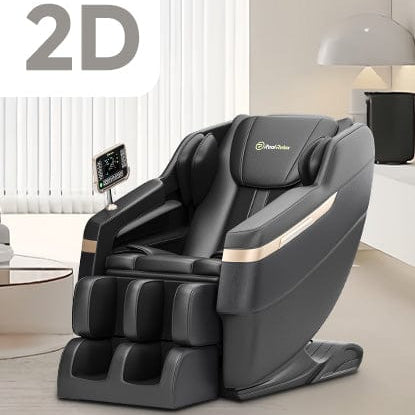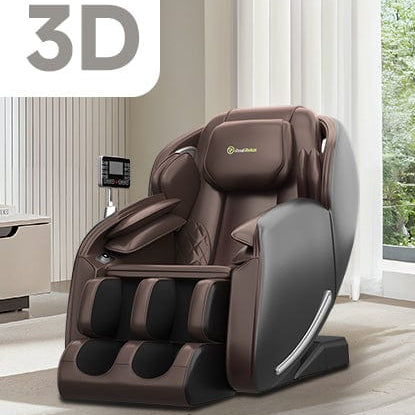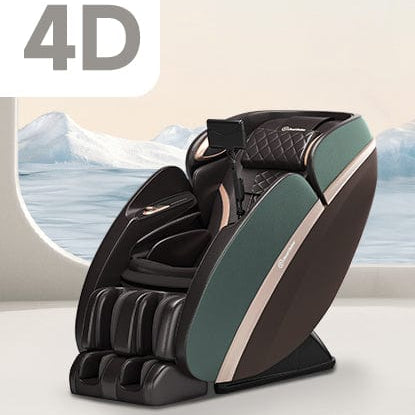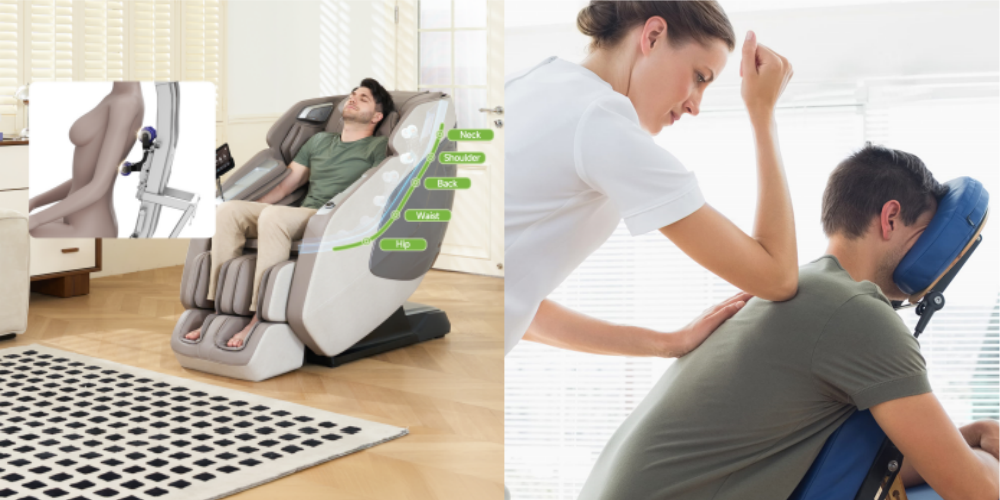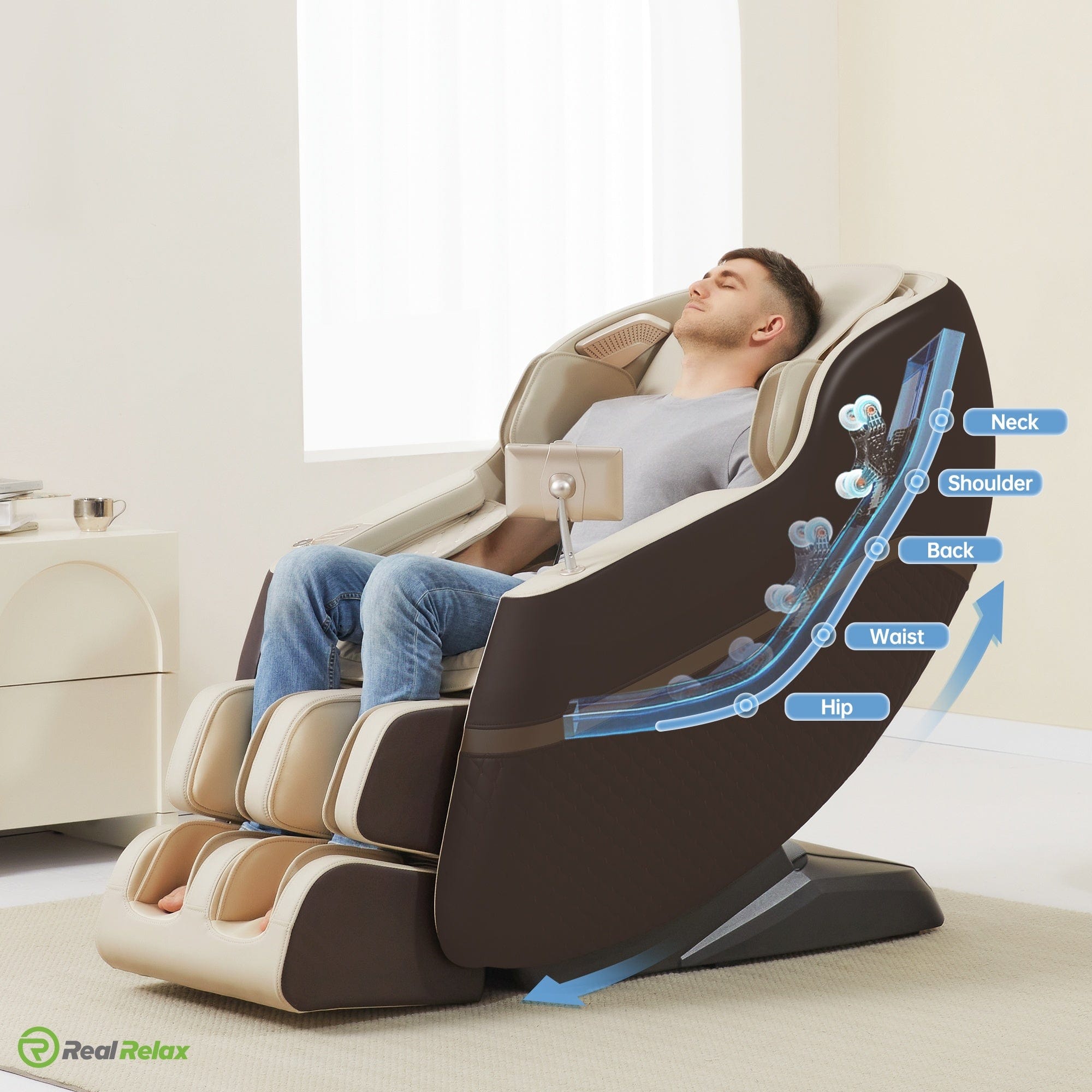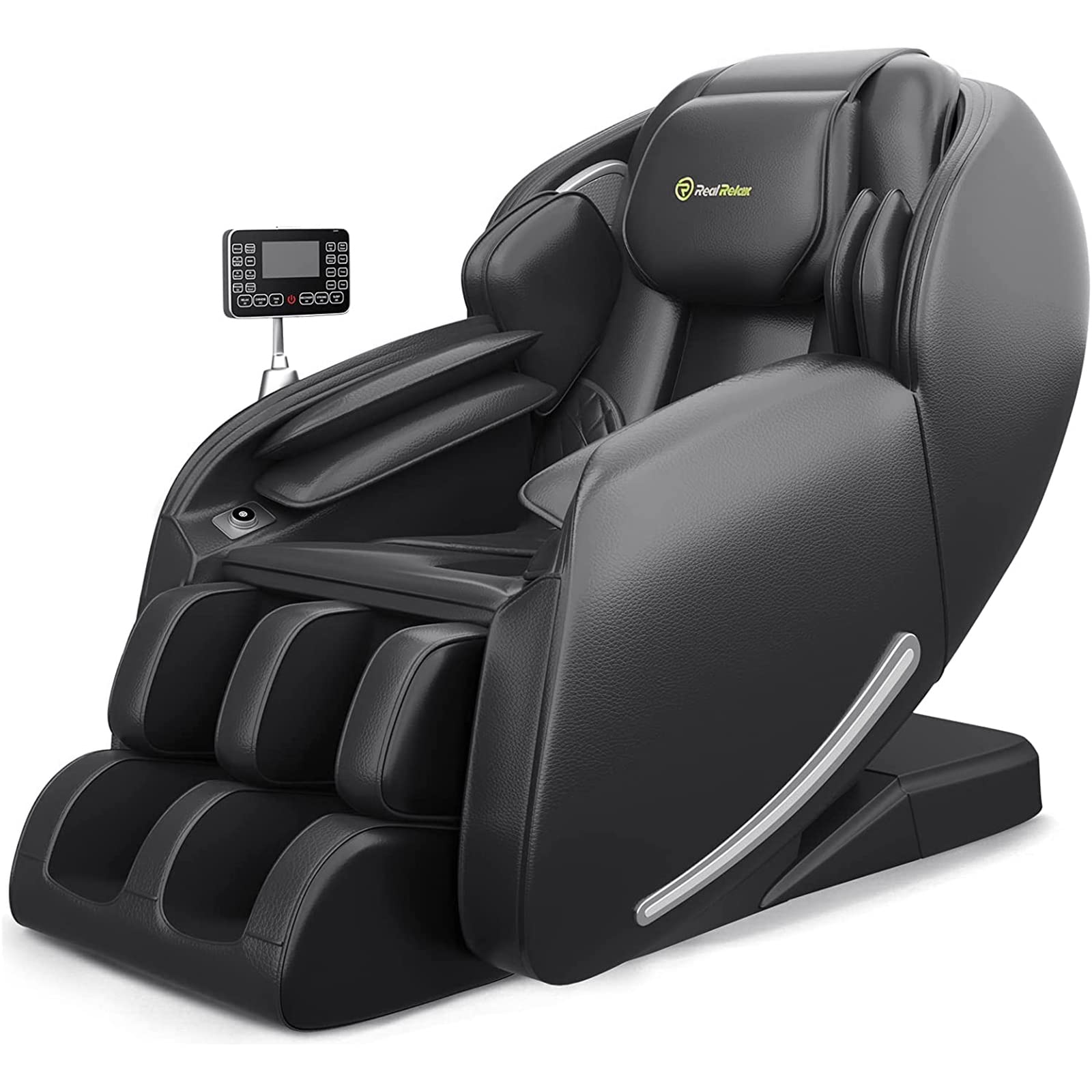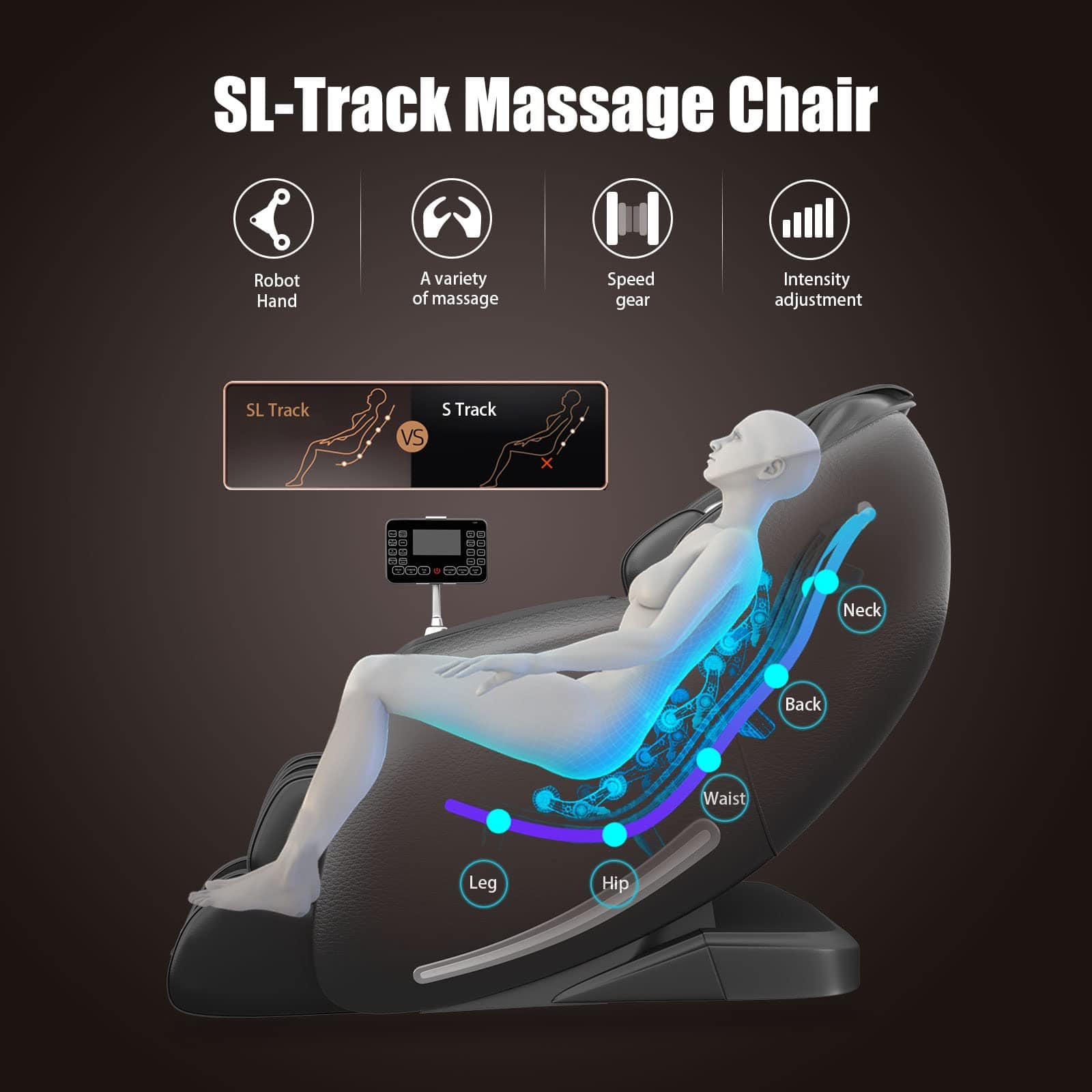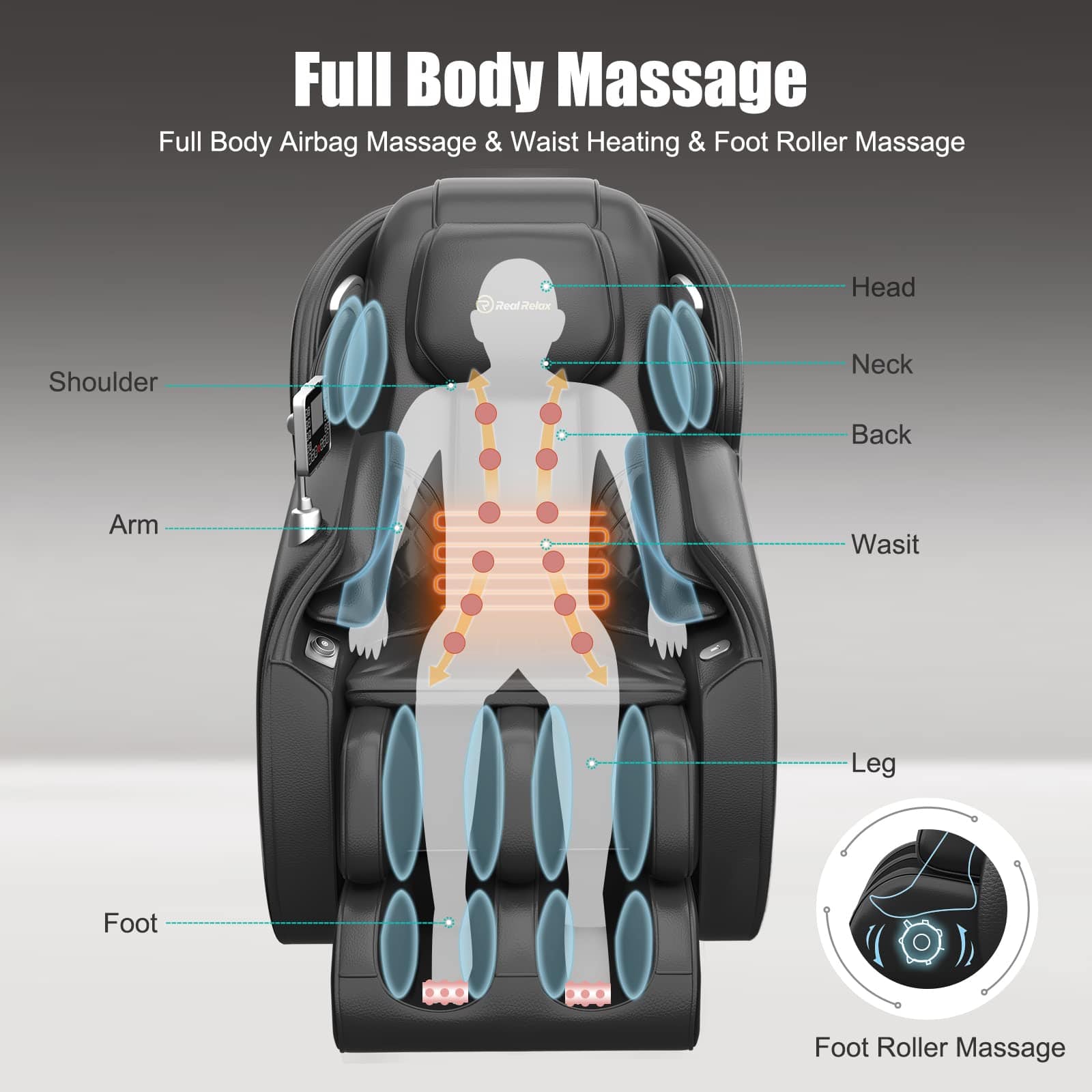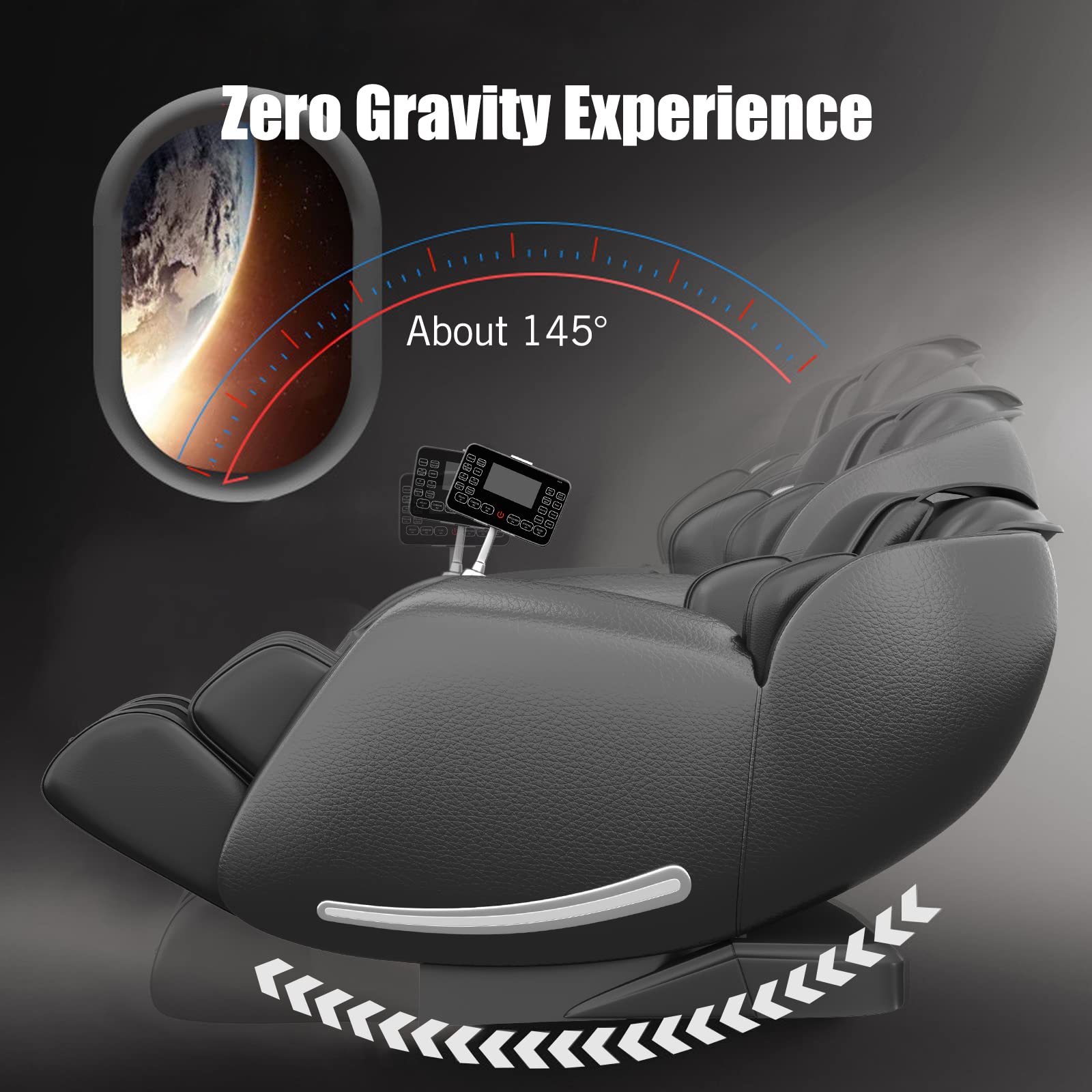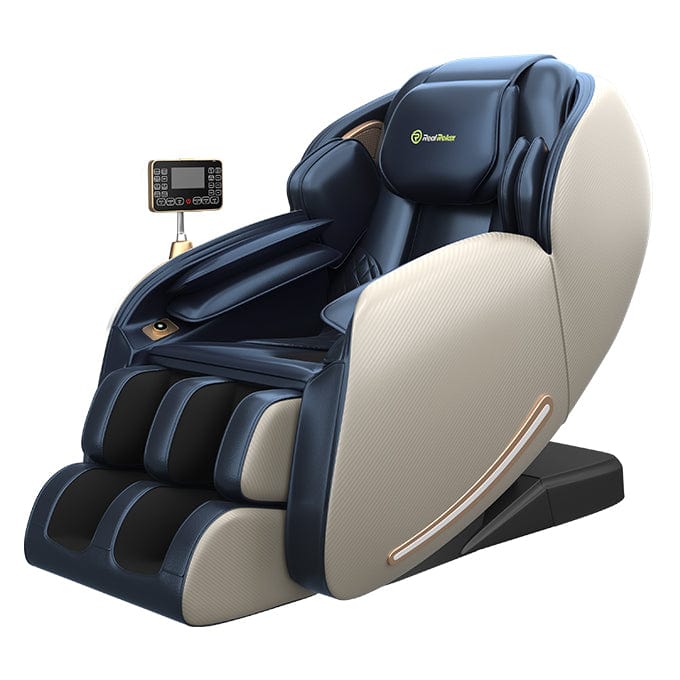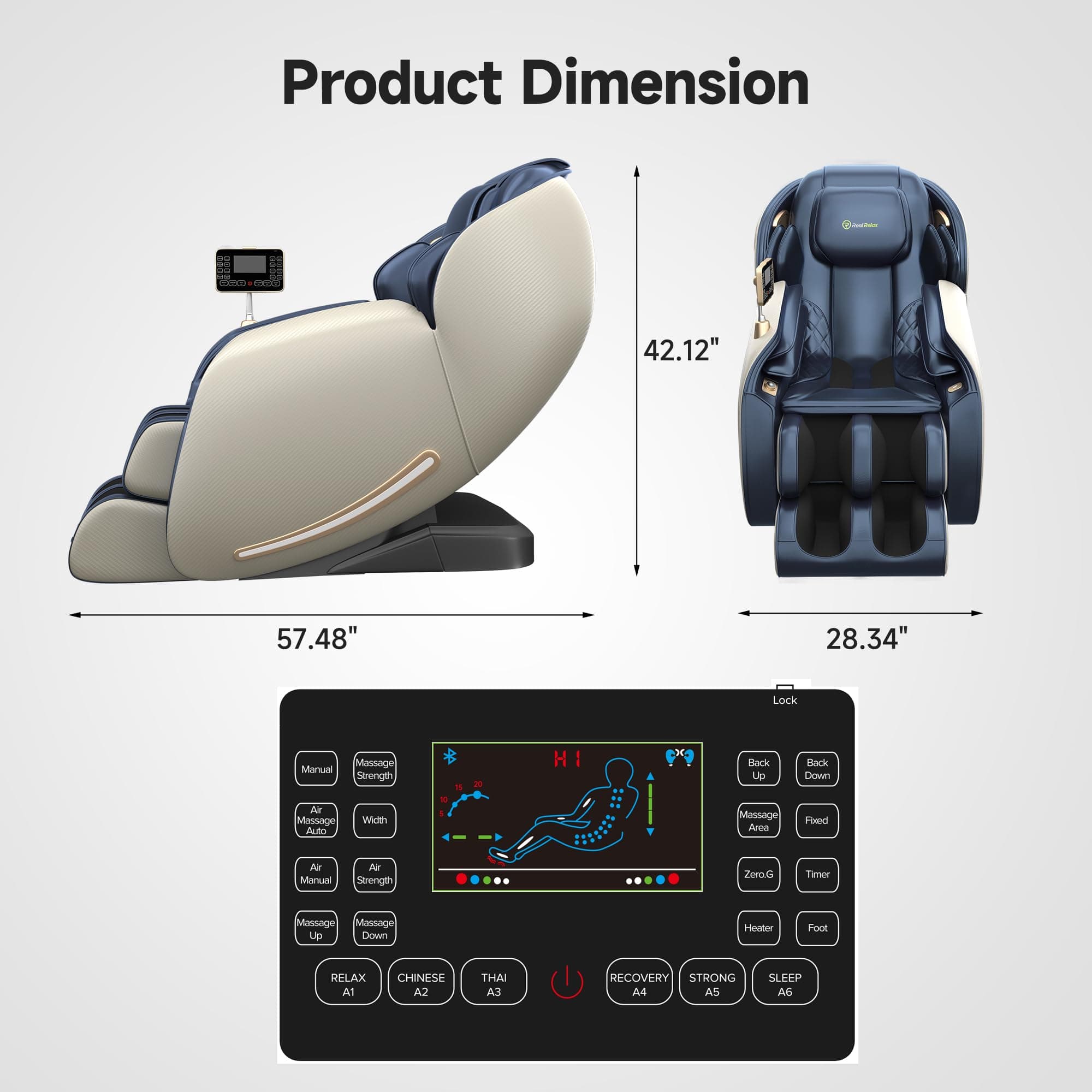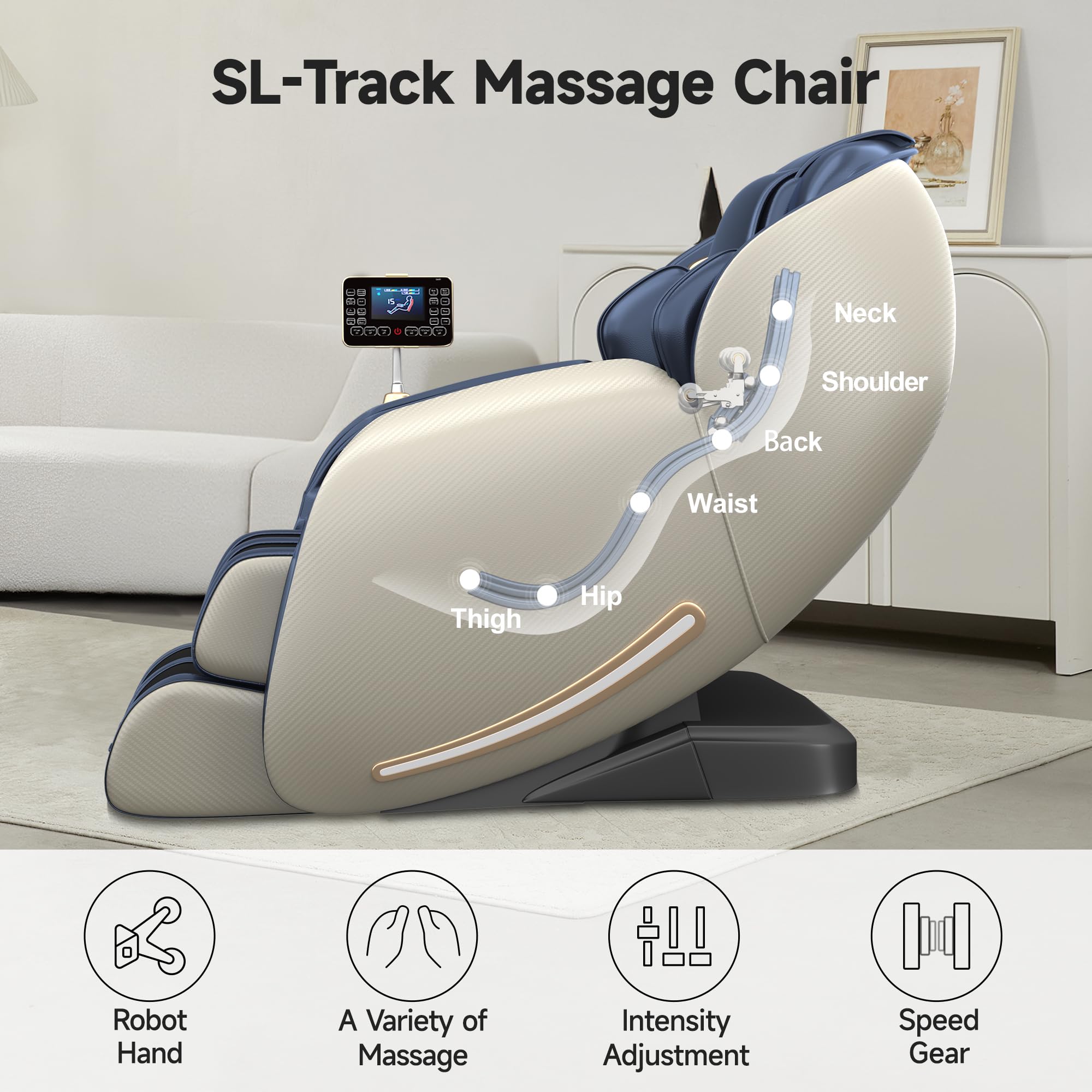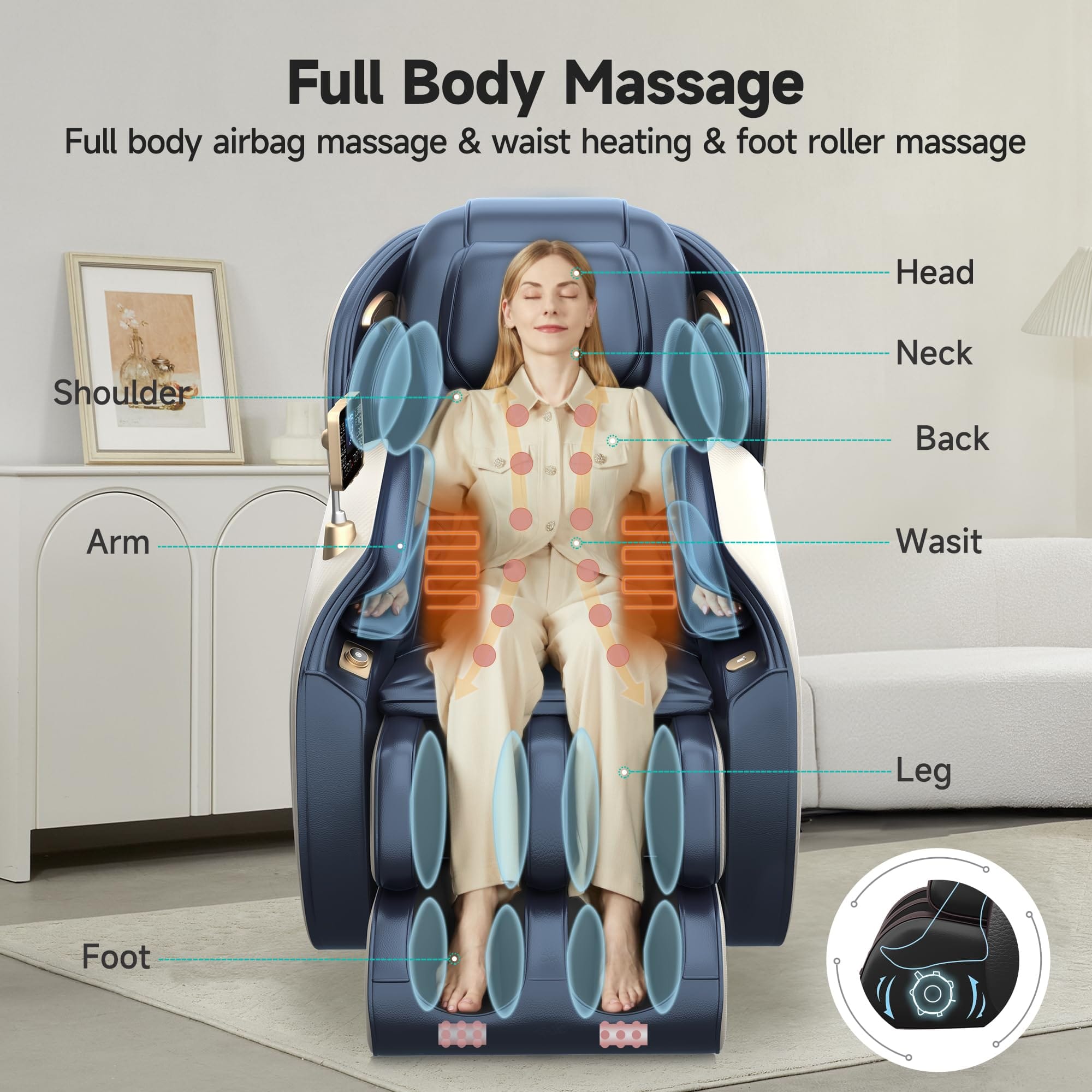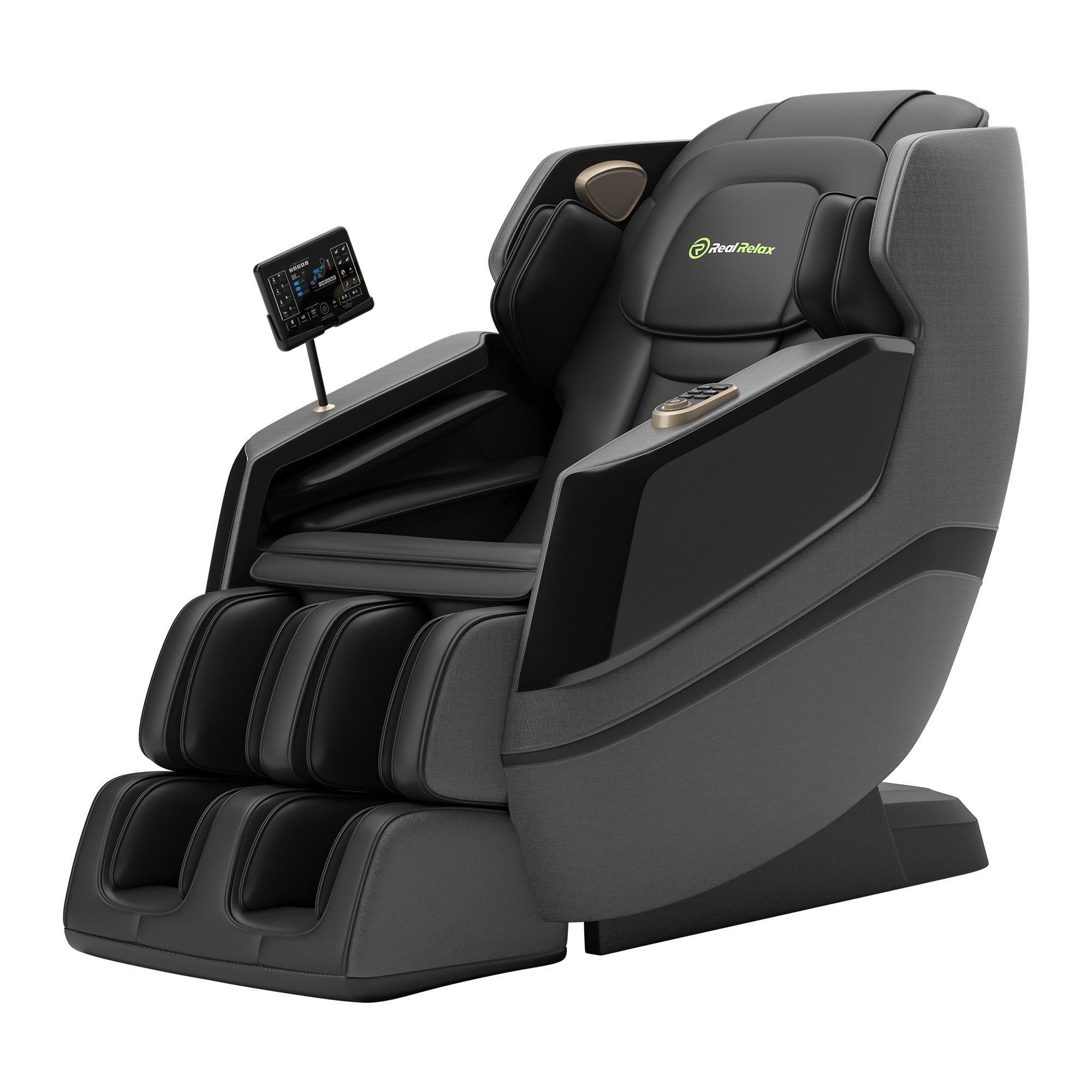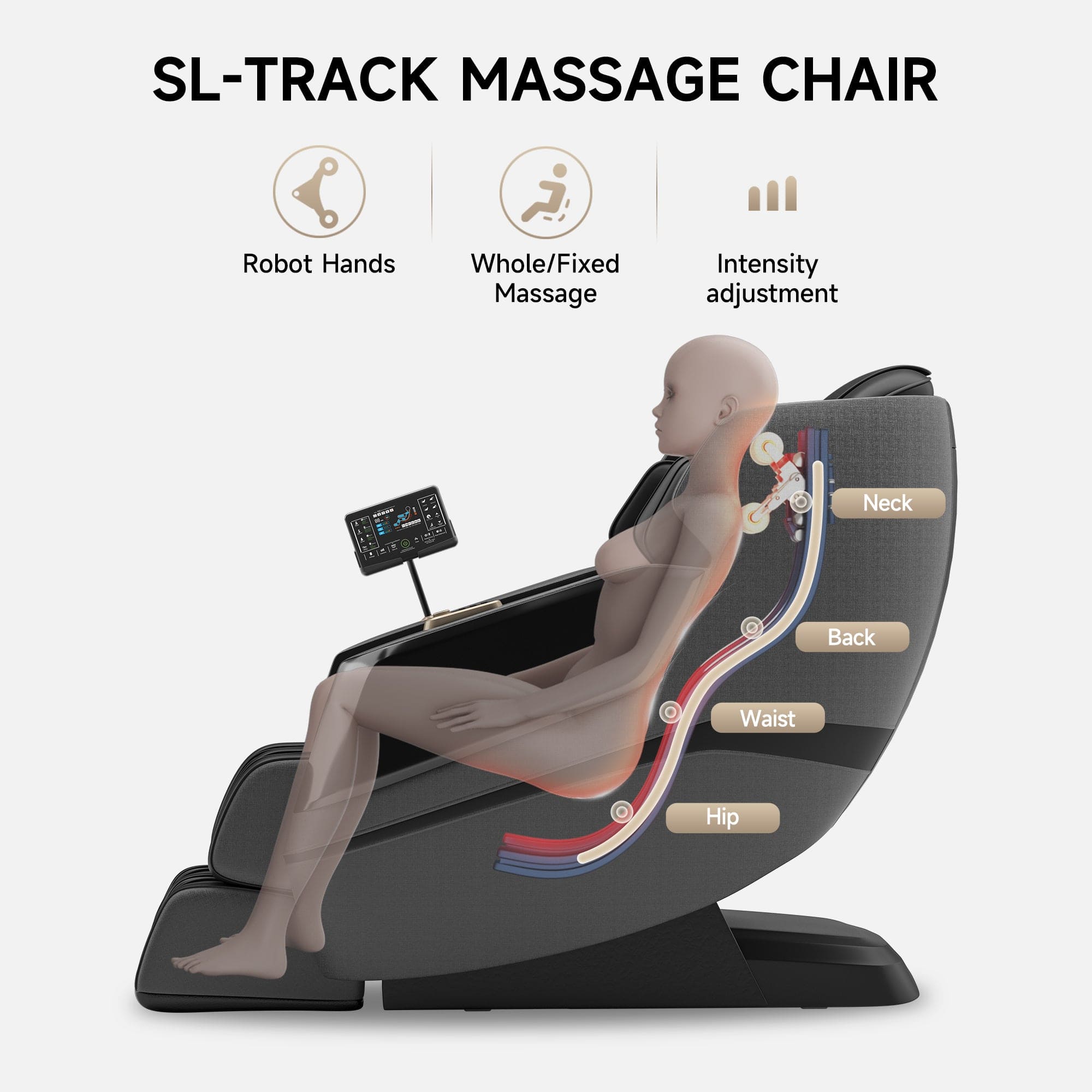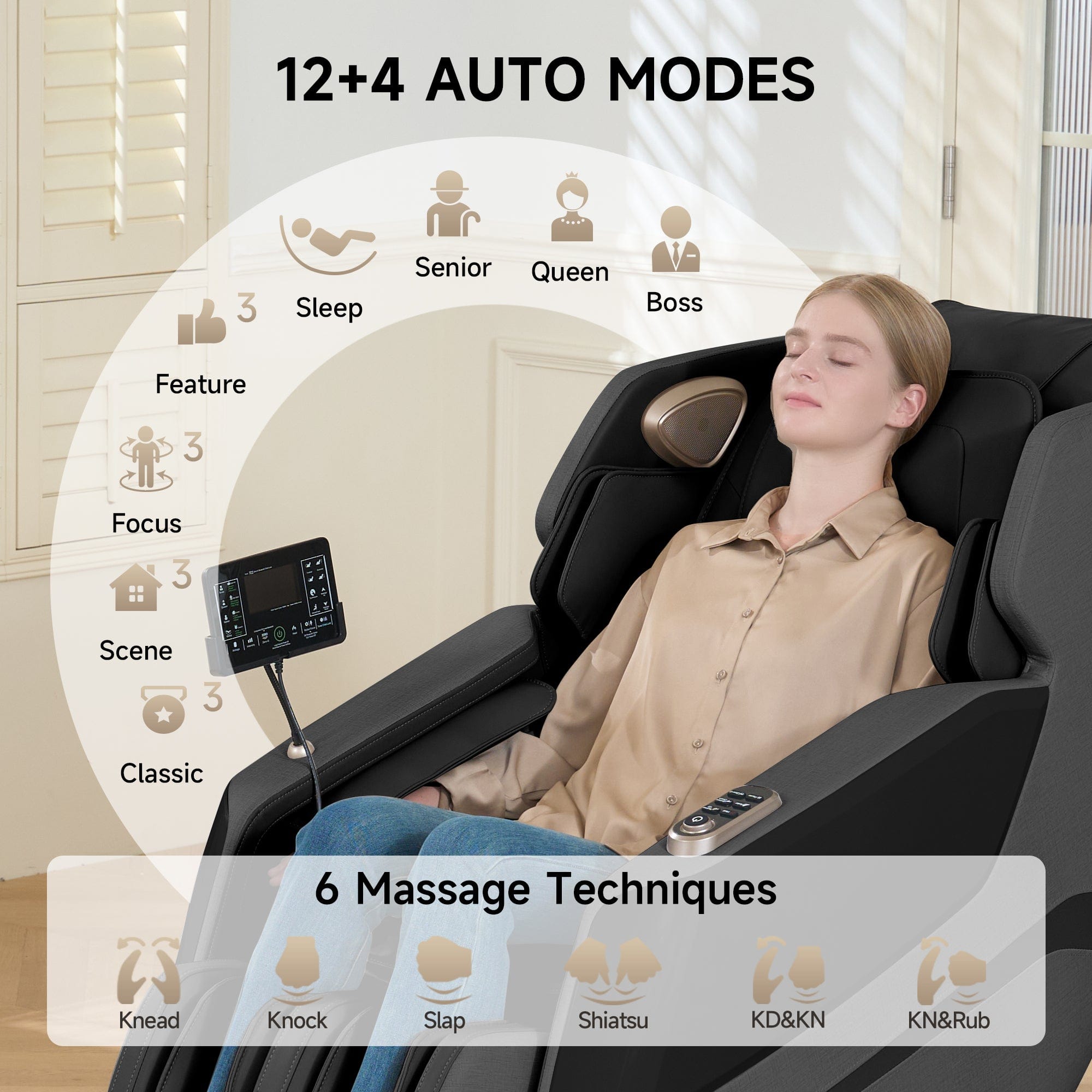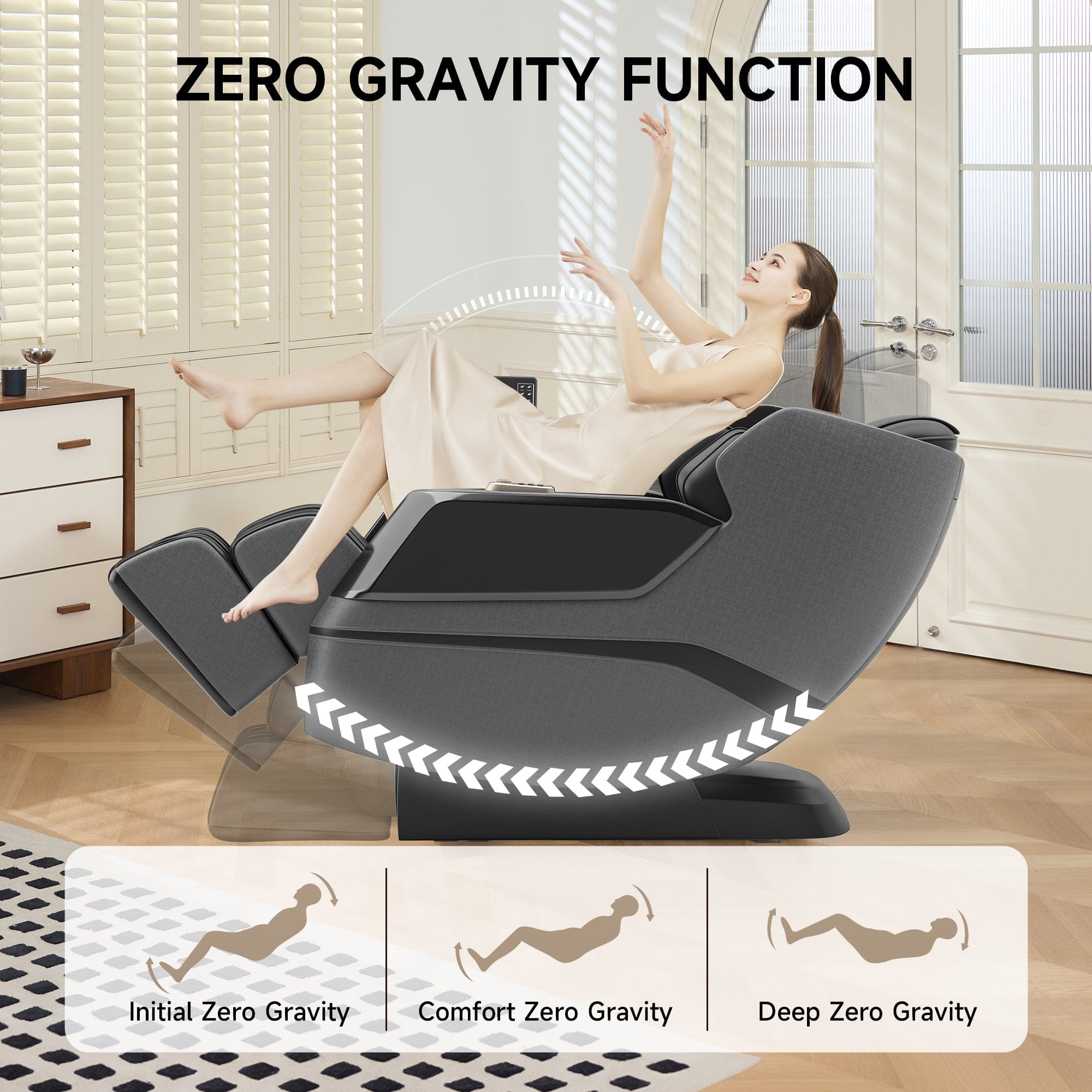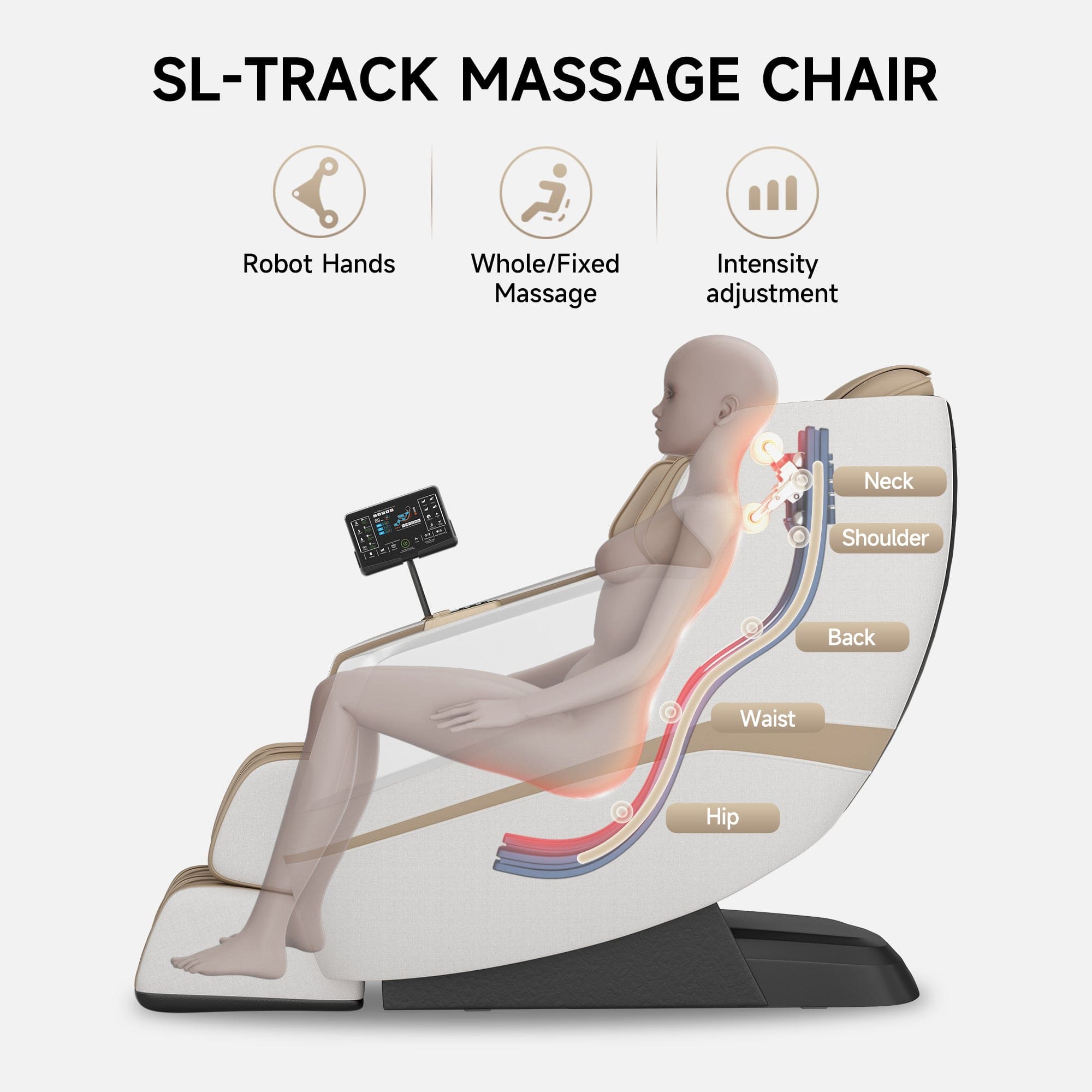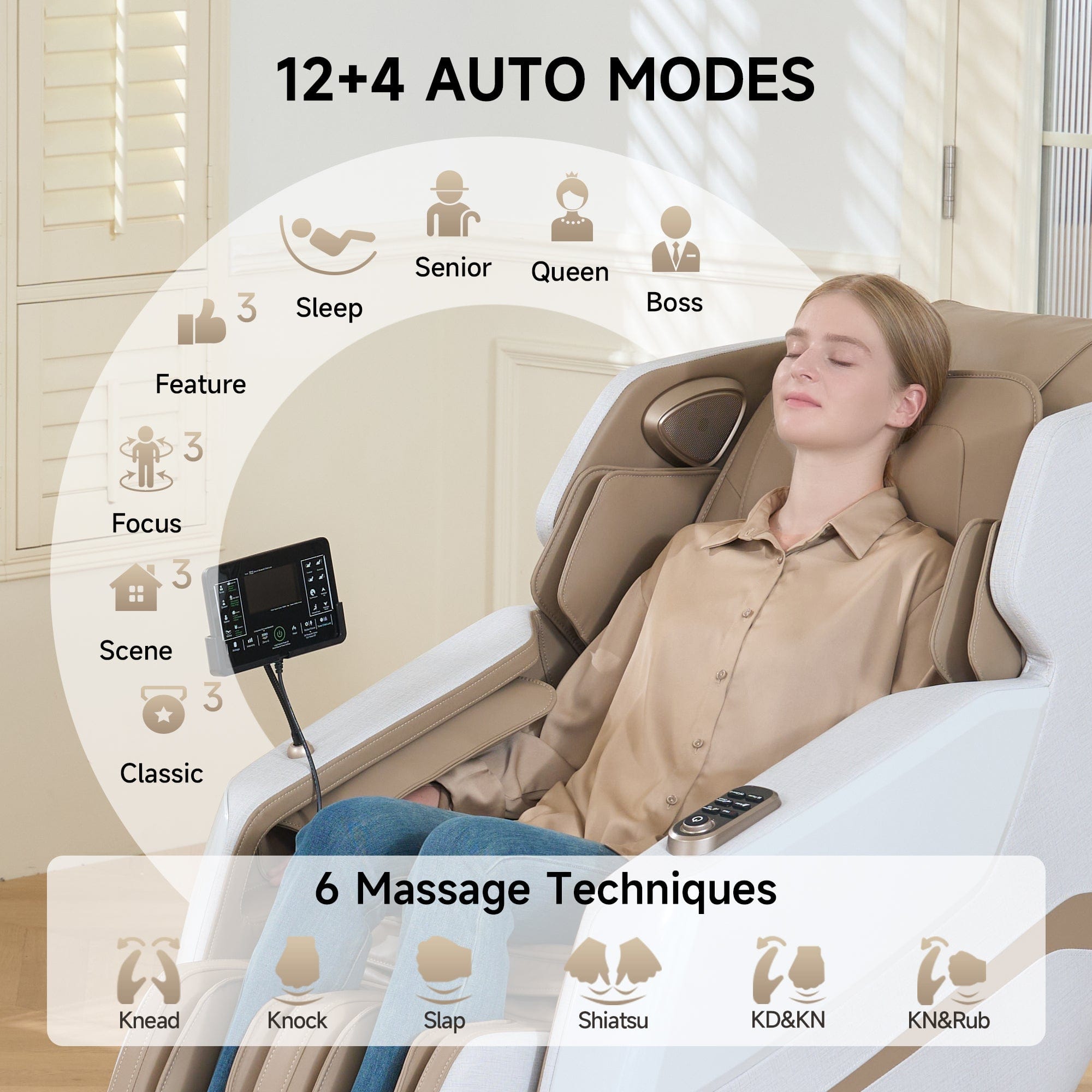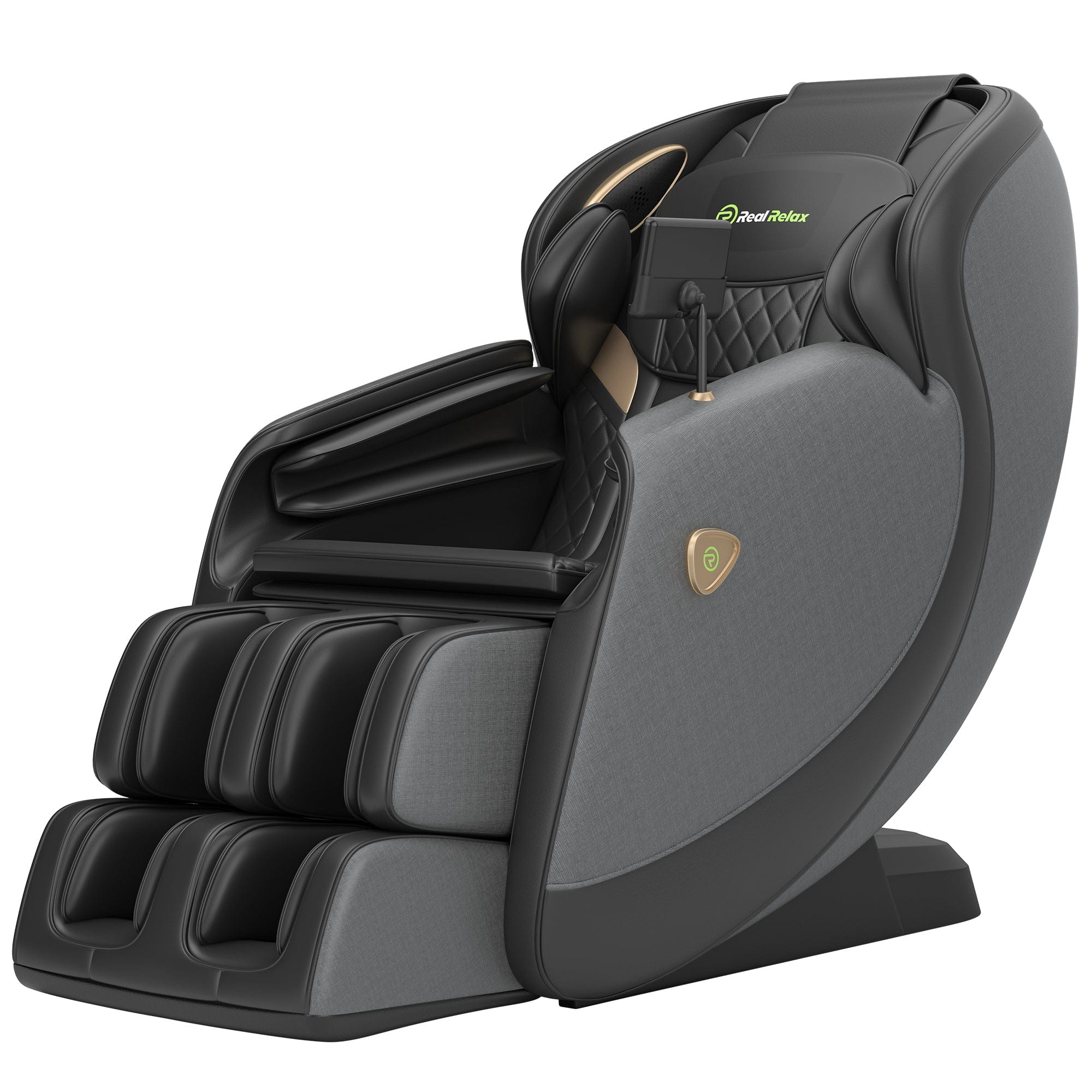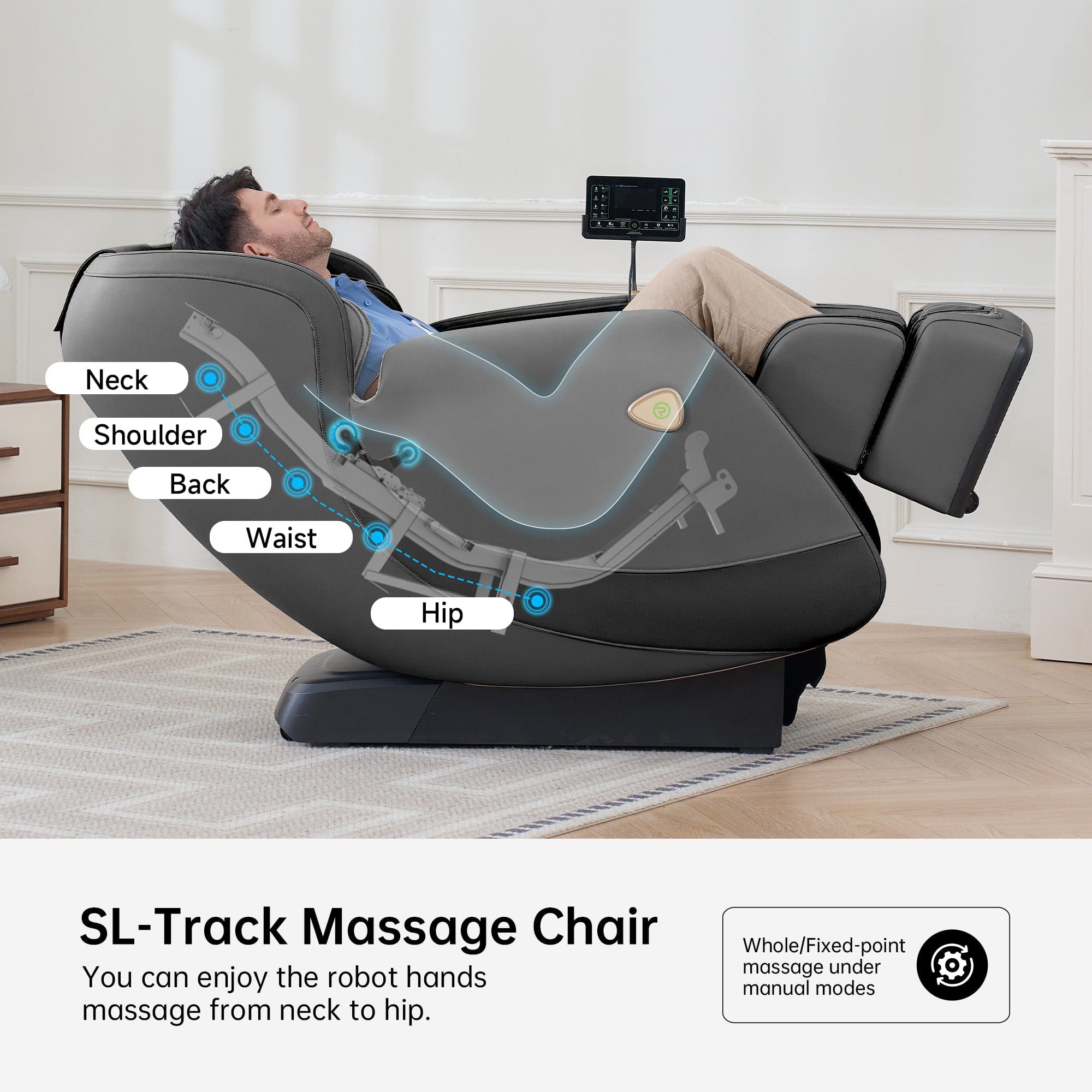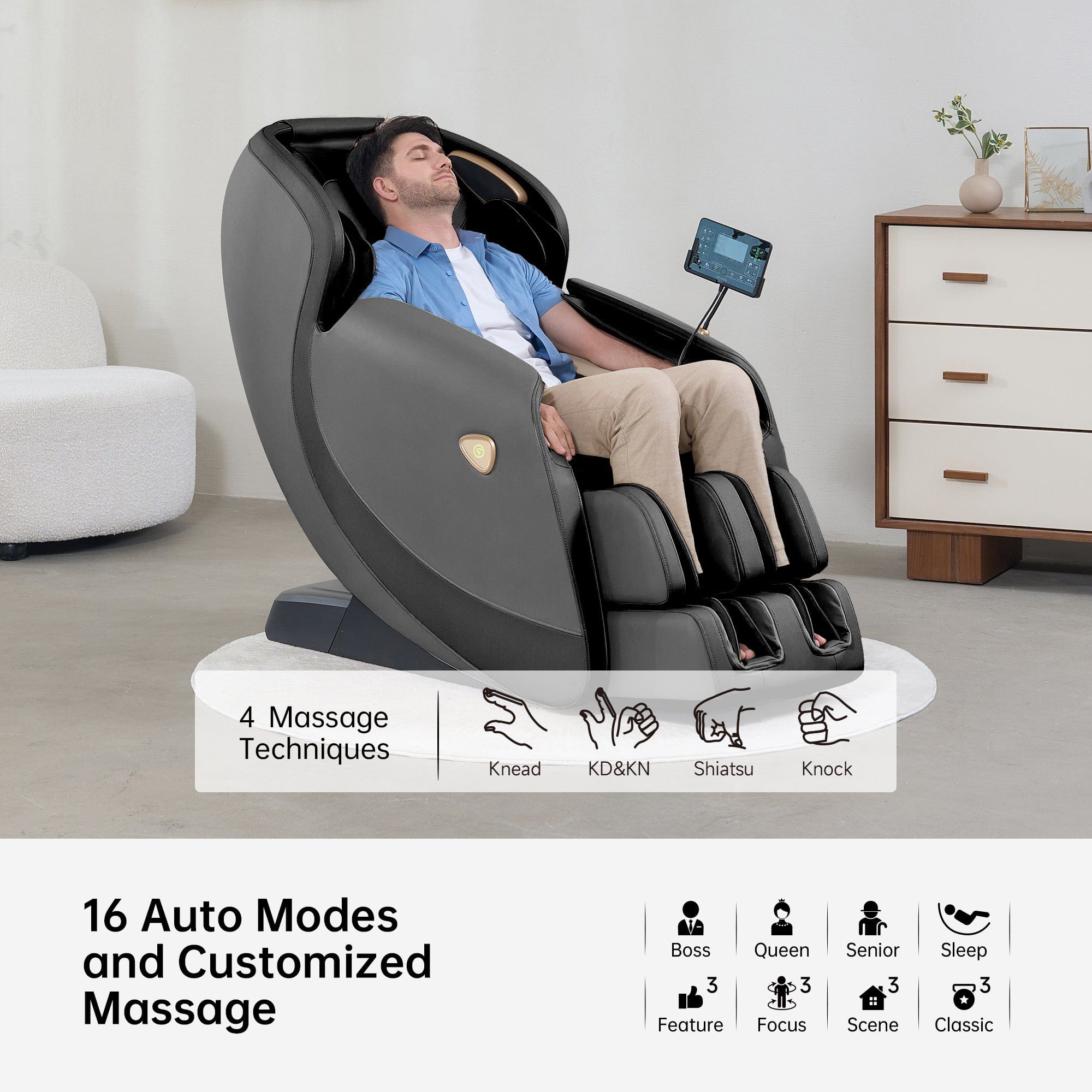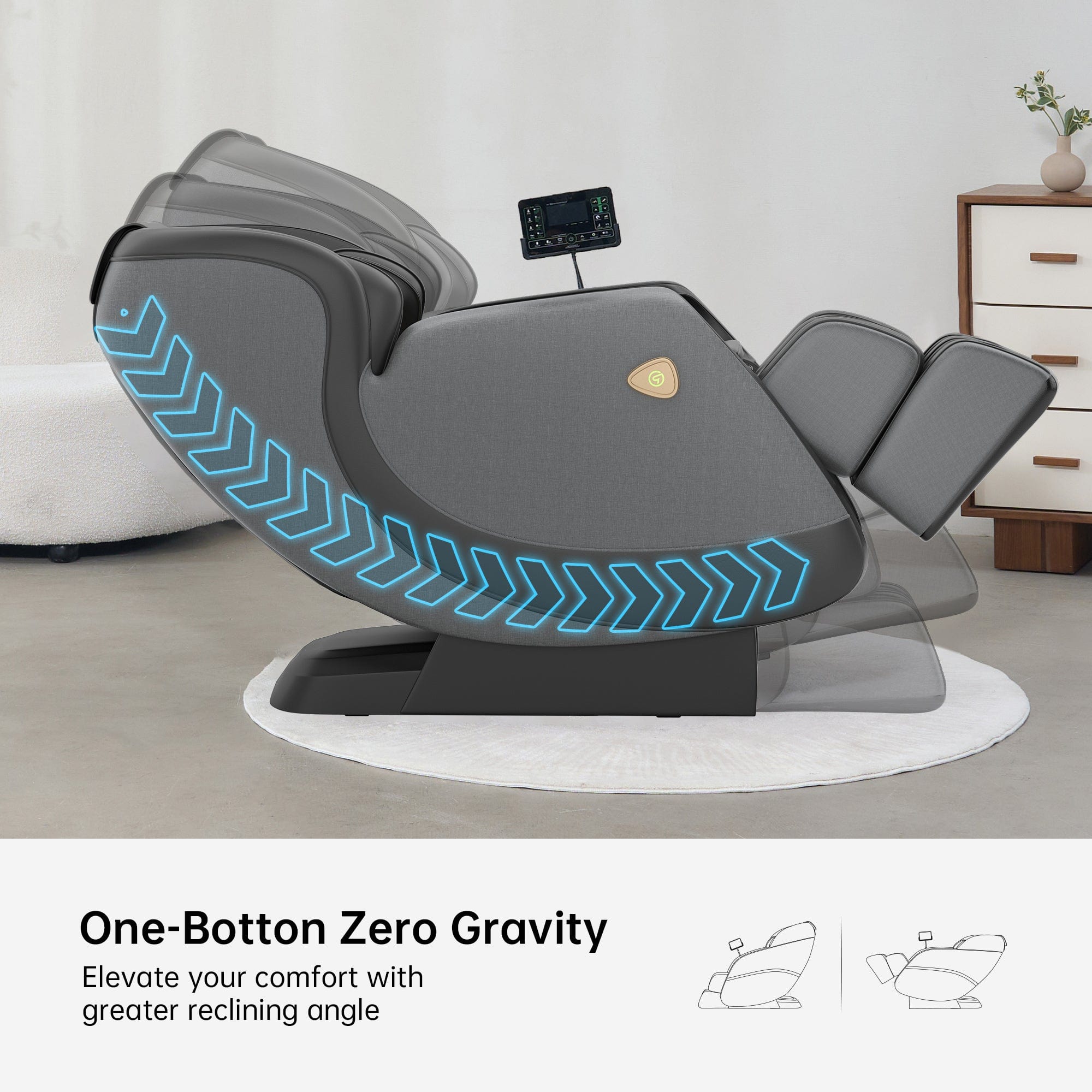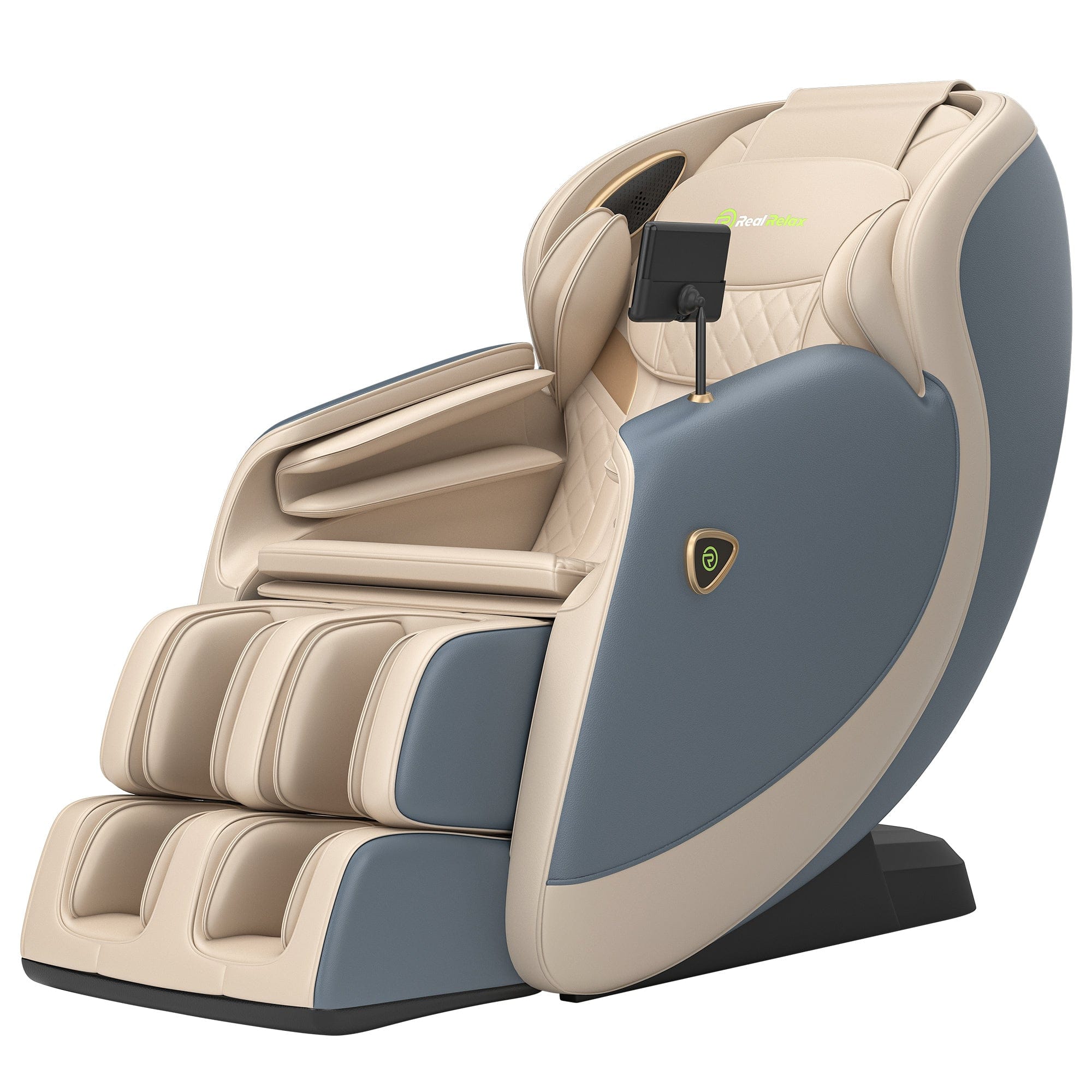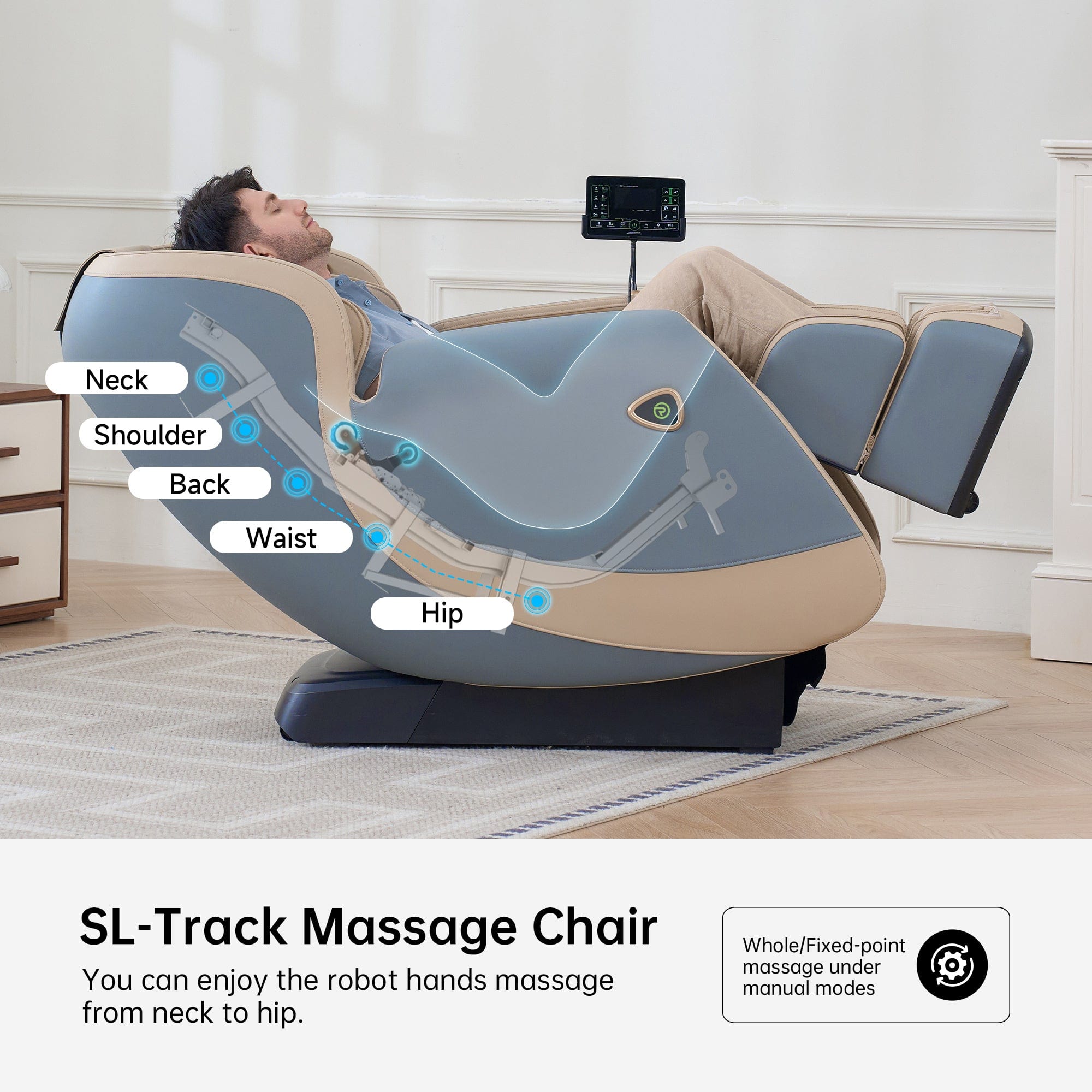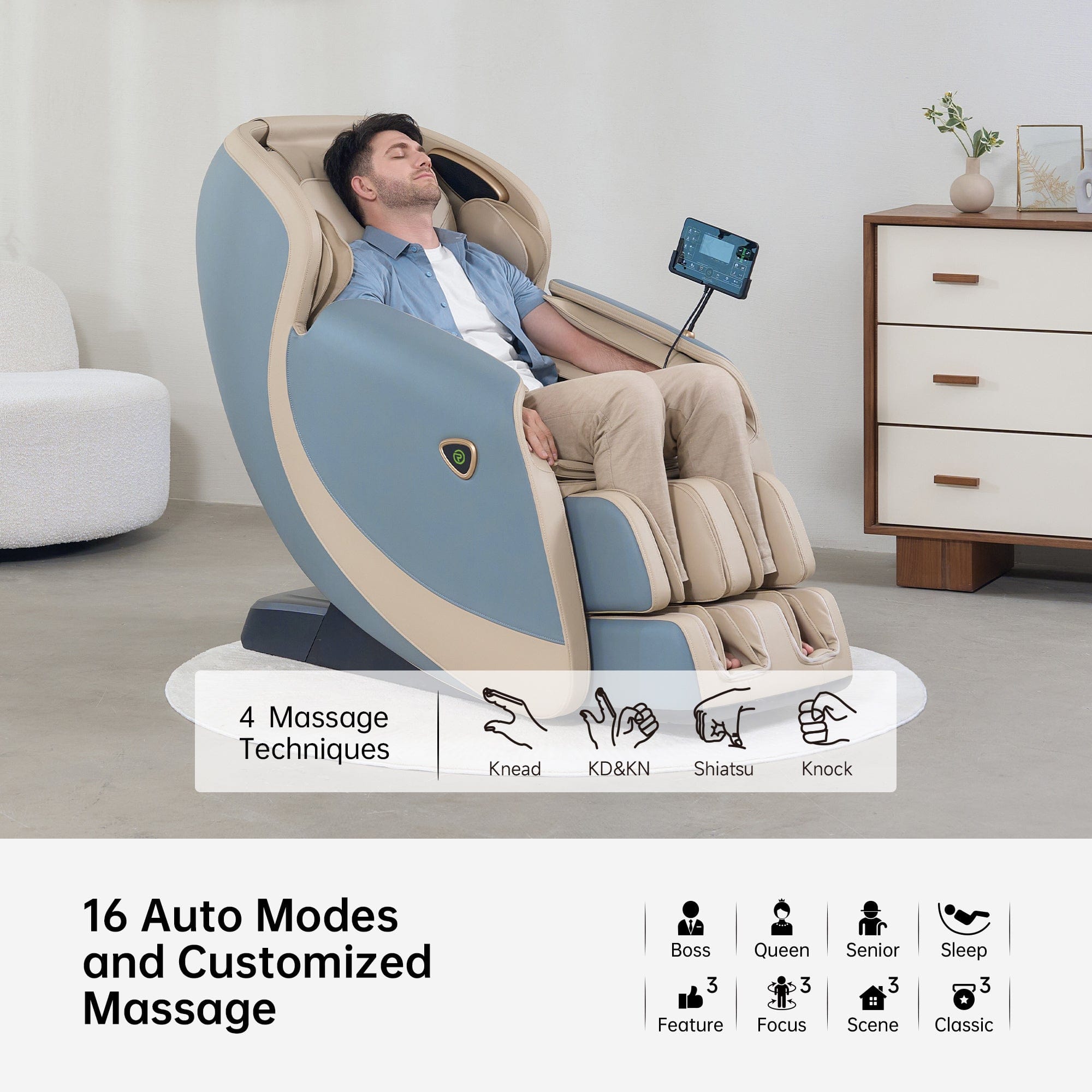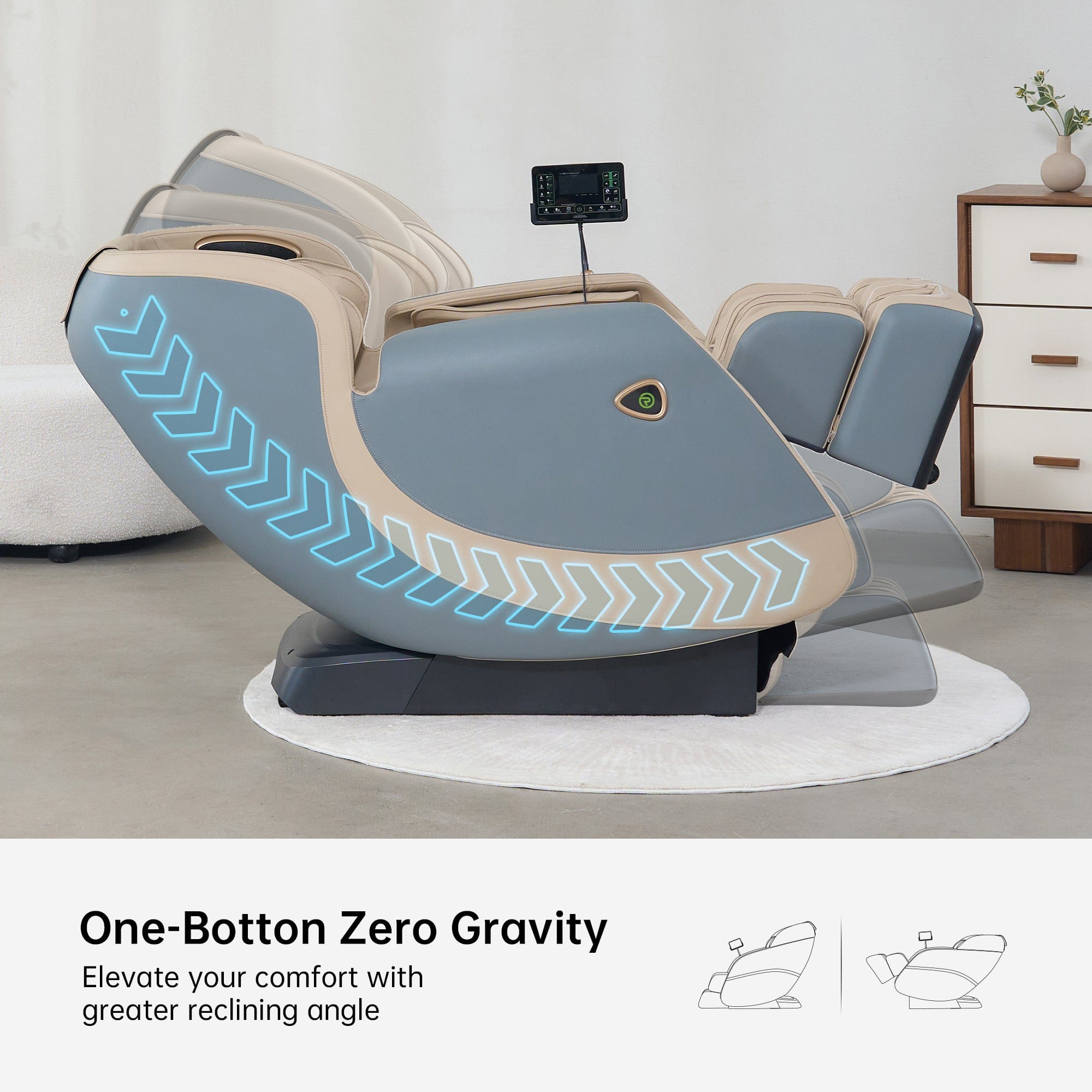When it comes to choosing between a massage chair and a massage therapist, it's not always an easy decision. Both options come with their own set of benefits and drawbacks, depending on what you're looking for in a massage experience. In this article, we'll break down the pros and cons of each to help you figure out which one might be best suited to your needs. Whether you're someone who loves the idea of a professional working their magic on you or you're intrigued by the convenience and tech-savviness of a massage chair, we’ve got you covered.
Massage Chair
Let’s start by taking a look at the benefits of a massage chair. These machines have come a long way in recent years, incorporating a variety of advanced features that mimic the techniques used by professional massage therapists. Here are some of the major advantages of using a massage chair:
1. Convenience
One of the biggest draws of a massage chair is its convenience. You don’t have to schedule an appointment, leave your home, or even worry about tipping anyone. All you need to do is sit down, press a button, and the chair takes care of the rest. Whether it's in the comfort of your living room, office, or even your bedroom, you can enjoy a relaxing massage any time you want.
2. Cost-Effective Over Time
Massage chairs can be an investment, but when you think about it, they might save you money in the long run. A professional massage can cost anywhere from $50 to $150 per session, depending on where you go. With a massage chair, once you pay for the initial purchase, there are no recurring costs. If you use it frequently, it can be a much cheaper option than visiting a massage therapist regularly.
3. Instant Access to Different Techniques
Many modern massage chairs come with various pre-programmed settings that simulate different types of massages. For example, you can select a "shiatsu" massage, a "Swedish" massage, or even a "deep tissue" option. These settings are designed to target different areas of your body, allowing you to customize your massage experience based on your needs. If you enjoy a certain type of massage, it’s easy to set the chair to replicate it.
4. Privacy and Comfort
Some people are more comfortable in private settings than in a professional massage environment. If you’re someone who feels uneasy about undressing in front of a therapist or if you're just shy, a massage chair offers complete privacy. Plus, you can set the temperature of the room, adjust the lighting, and even enjoy a cup of tea while you unwind.
However, there are some downsides to massage chairs that are important to consider.
1. Limited Personalization
While modern massage chairs can simulate a variety of techniques, they still can't match the expertise and intuition of a human massage therapist. A therapist can adjust their pressure and focus on specific areas of tension based on your feedback. Massage chairs, on the other hand, follow pre-set programs that might not always hit the right spots in the way you'd like.
2. Less Effective for Severe Pain
If you’re dealing with chronic pain, injury recovery, or a more serious issue, a massage chair might not be as effective as seeing a professional. While a chair can help with general relaxation and reduce mild tension, it won’t have the same ability to identify and target deep muscle knots or treat specific injuries in the way a therapist can.
3. Lack of Human Touch
A big part of the appeal of a massage is the human touch. The connection and care provided by a massage therapist are something a chair simply can’t replicate. For many people, the experience of someone genuinely caring for their well-being adds a personal, therapeutic layer to the massage that technology can’t replace.
Massage Therapist
Now, let’s turn our attention to the benefits of choosing a professional massage therapist. A human therapist brings a level of expertise and personal touch that a machine just can’t replicate. Here are the reasons why some people prefer a massage therapist:
1. Personalized Experience
One of the main benefits of getting a massage from a therapist is that the experience is entirely personalized. You can communicate with your therapist before, during, and after the massage to let them know what you need. Whether you want more pressure on a specific muscle group or you need help with an injury, a skilled therapist can tailor the session to your unique needs. They can also check in with you to ensure you’re comfortable and adjust their techniques as necessary.
2. Targeted Relief for Pain and Tension
If you're dealing with chronic pain, muscle stiffness, or an injury, a massage therapist is likely your best bet. They are trained to understand the human body and can provide targeted relief for problem areas. For example, if you have a tight neck and shoulders from stress or a sore back from lifting, your therapist can focus on those areas using deep tissue techniques or other specialized methods.
3. Human Connection and Relaxation
There’s something about human touch that is deeply comforting. A professional massage therapist can create a calming environment and use their touch to not only release muscle tension but also promote mental relaxation. If you're stressed or anxious, the human interaction and soothing nature of a therapist’s touch can go a long way in helping you feel rejuvenated.
4. Variety of Techniques and Expertise
Massage therapists are trained in a wide range of techniques, from Swedish massage to deep tissue to reflexology. Depending on what you're looking for, a therapist can draw from a variety of styles to ensure that your massage is as effective as possible. If you’re dealing with a specific issue, you can ask for specialized treatments, such as lymphatic drainage or hot stone massage, that might not be available with a massage chair.
However, professional massage therapy also has its drawbacks:
1. Cost
The main downside to visiting a massage therapist is the cost. As mentioned earlier, sessions can add up quickly. If you’re someone who requires frequent massages for stress relief or pain management, the cost of seeing a therapist regularly might be out of reach. While insurance may cover certain types of therapy, it’s not always guaranteed.
2. Scheduling and Availability
Getting an appointment with a massage therapist often requires planning in advance. Many therapists have busy schedules, especially during peak hours, so it might take some time to secure an appointment. Plus, if you’re looking for a last-minute massage, you might not have a lot of options available to you.
3. Time Commitment
A typical massage session lasts anywhere from 60 to 90 minutes. While this is great for relaxation, it might not always fit into your schedule. If you're someone who's always on the go, finding the time for a regular massage can be difficult.
Which One Should You Choose?
So, should you choose a massage chair or a massage therapist? It really depends on what you’re looking for.
- If you’re after convenience, privacy, and a budget-friendly option that you can enjoy anytime, a massage chair might be the right choice for you.
- If you’re seeking a more personalized experience, dealing with chronic pain, or simply prefer the soothing touch of a human, a professional massage therapist is likely your best bet.
Some people even enjoy the best of both worlds—using a massage chair for daily relaxation and seeking out a therapist for more specific treatments. Ultimately, the choice between a massage chair and a massage therapist comes down to your personal preferences, budget, and lifestyle.
No matter which option you choose, both can contribute to your overall well-being and relaxation. So go ahead, treat yourself to a little TLC—whether it’s from a chair or a therapist!



